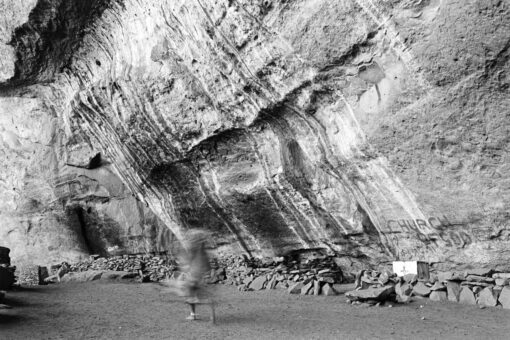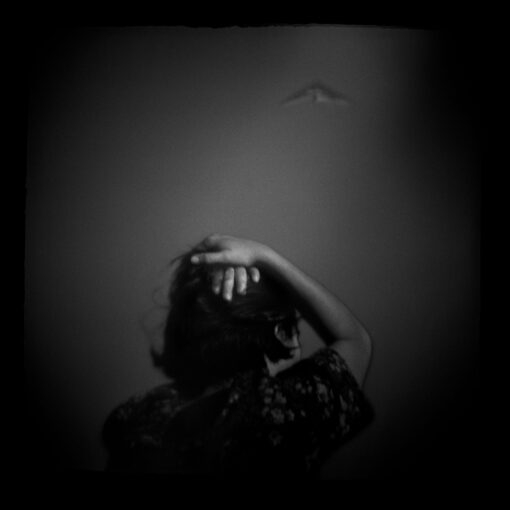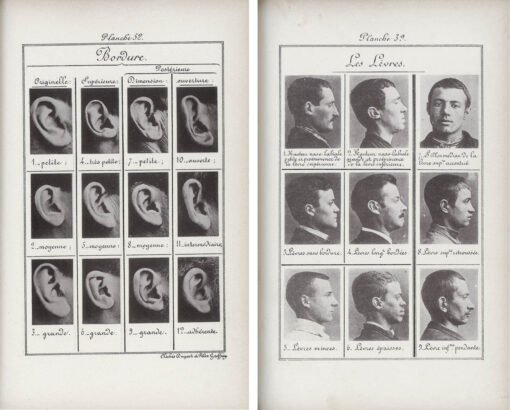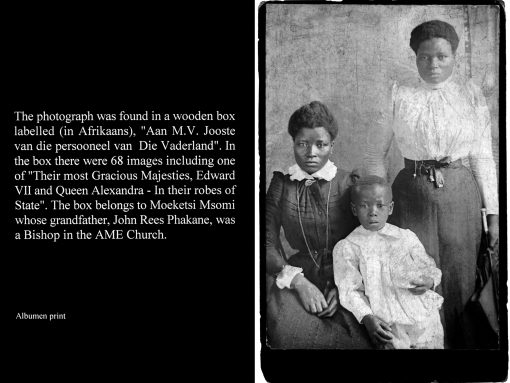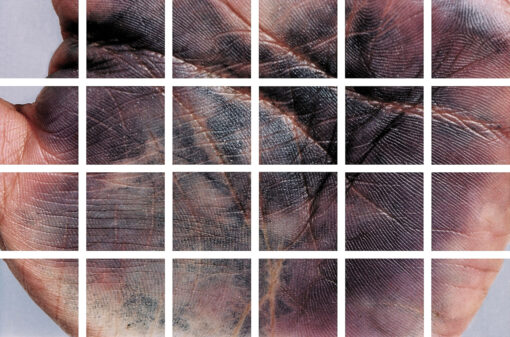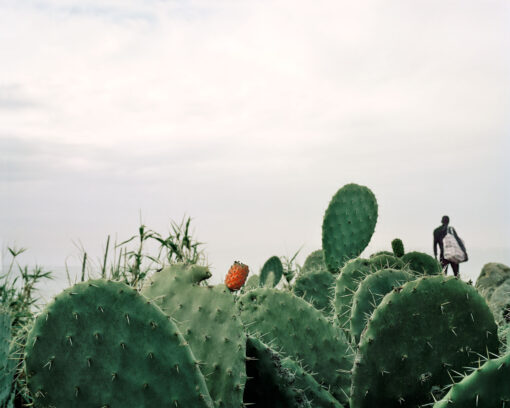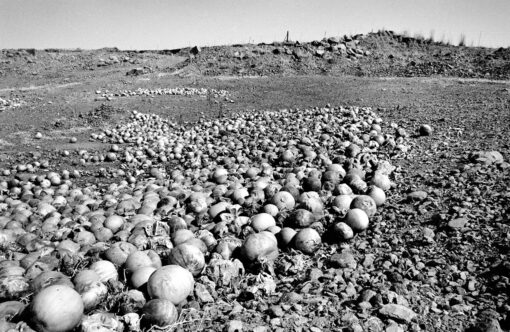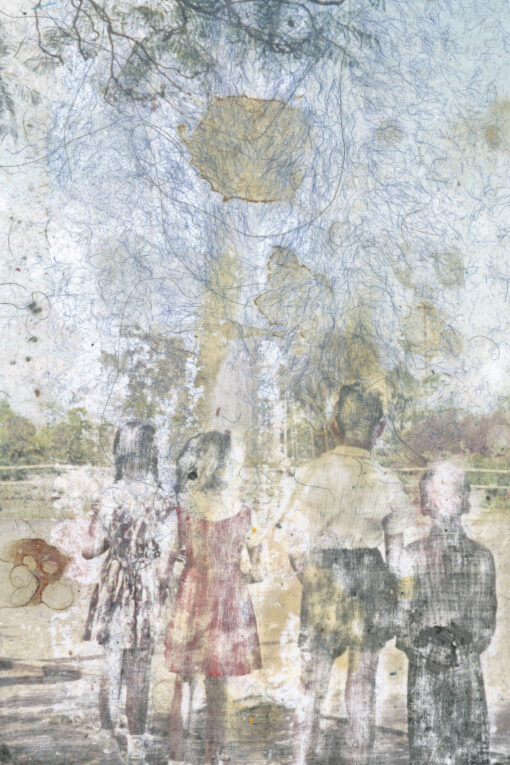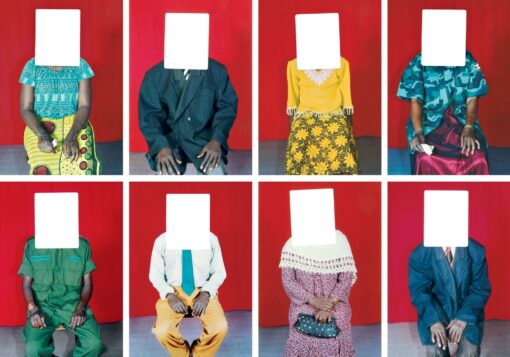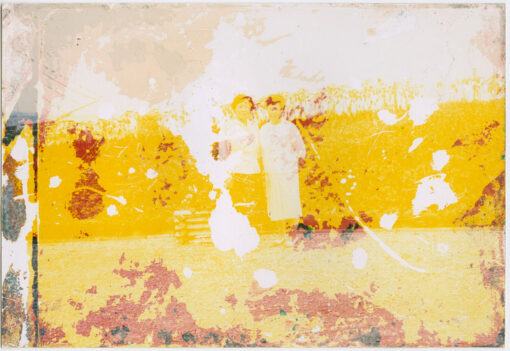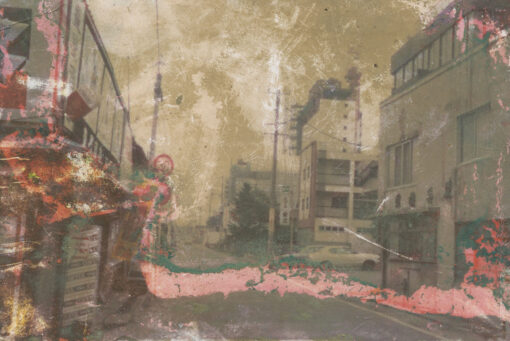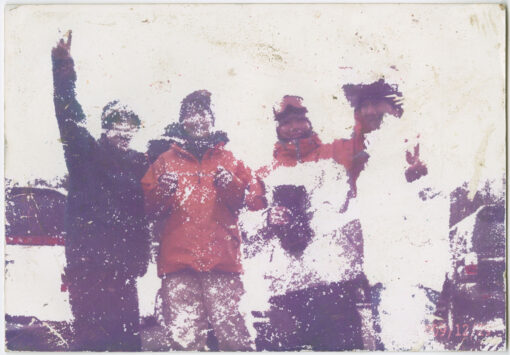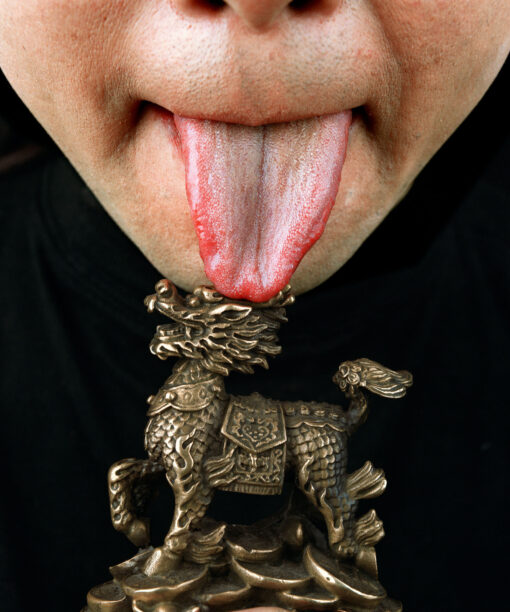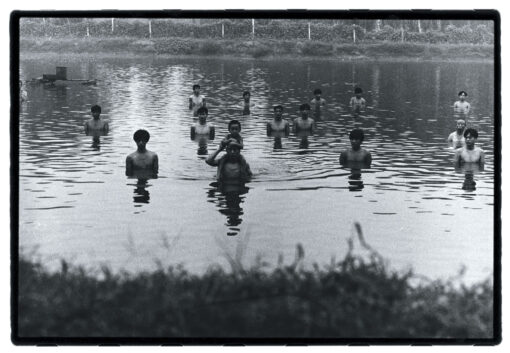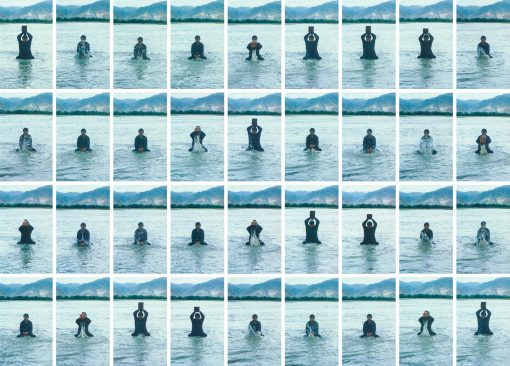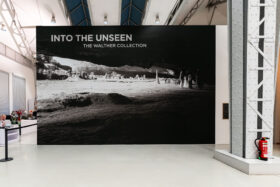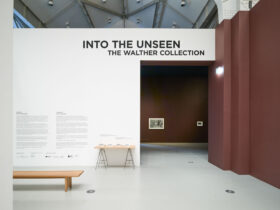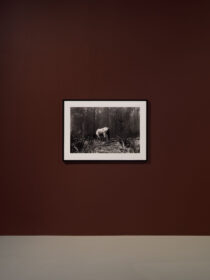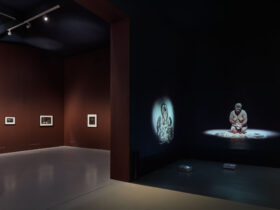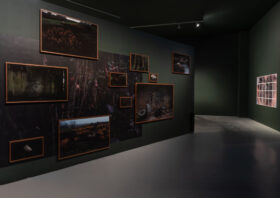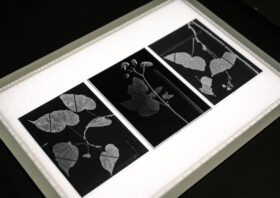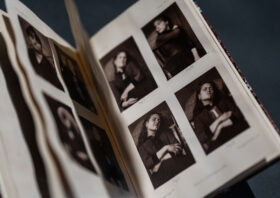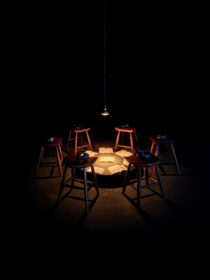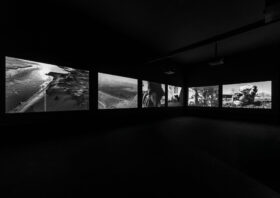Into the Unseen
Deichtorhallen Hamburg, Germany
October 24, 2025 – April 26, 2026

Deichtorhallen Hamburg, Germany
October 24, 2025 – April 26, 2026
The Walther Collection is pleased to present Into the Unseen at Deichtorhallen Hamburg in Germany. This exhibition marks the final major presentation of the Collection in Europe before 6,500 works are gifted to The Metropolitan Museum of Art in New York. Curated by Nadine Isabelle Henrich and Tina M. Campt, Into the Unseen challenges visitors to look beyond the visible and make the unseen – the mystical, the repressed, or the elusive – perceptible by activating photography’s audible, tactile, and emotional registers. This multi-sensory exhibition thus engages critiques of the dominance of vision by charting a more expansive understanding of photography and embracing a new poetics of the unseen.
The curatorial concept of the exhibition asks what photography can be beyond detached viewing. Rather than a neutral technology of representation, photography is presented as a medium that generates both connection and resistance. In this way, it eschews any notion of vision as a privileged sensory register and presenting it instead as inseparably linked to a multi-sensory engagement with the world around us.
Unlike a traditional white cube gallery, the exhibition design leads visitors into dark rooms where images float organically and walls release a distinctive scent. Small architectural structures crafted from local Douglas fir create intimate spaces for viewing vernacular photographs, scientific studies, and family albums. The wood has been treated using traditional Japanese Yakisugi techniques, which give it a deep black, shimmering surface with a pronounced sculptural grain. The choice of wall colors, textiles, and colored-infused ceilings challenges the fiction of detached looking by creating sense of embeddedness in the artwork. In this way, the exhibition itself takes a multisensory approach to the installation of artworks — a curatorial intervention that intensifies the experience of engaging art by activating the full range of our senses.
Photography (“writing with light”) is structured by the calibration of light. ‘Exposure’ and ‘capture’ are key terms in the photographic vocabulary which express the founding aspiration of the medium: to create a tangible record of what we see and know about the world around us. Yet since its inception, photography has always concealed as much as it reveals. As Shawn Michelle Smith emphasizes, what lies at the heart of photography is “both an intense desire, and a failure, to see.”
Taking a similar approach, the artists featured in this section engage photography from the perspective of darkness, opacity, and obscurity, rather than transparency and visibility. This first room invites you to tune in to the dense frequential resonances we encounter through these artists’ deft manipulation of darkness, absence, blur, and negative space. Their work activates what remains stubbornly invisible or unseen within the image, using photography to release that which rumbles in the shadows of our imagination and consciousness: the elusive spiritual presences, erased histories, repressed fears, and unacknowledged forces that shape us in profound ways.
When we attune our senses to these richly layered works, we hear the murmurs of spiritual awakenings that nurtured Black resistance struggles. We confront the lingering traumas of Apartheid that haunt South Africa’s striking landscapes. We are touched by the soft, blurry focus of a toy camera that transports affective registers instead of visual information. And we are moved by intimate and ritualistic images of queer bodies that refuse to conform to expectations of social propriety or norm.
Photo albums and personal archives of inherited family portraits are quintessentially haptic objects. The order and sequence of their pages builds a history, tells a story, maps relationships, and traces lives. Born from vernacular practices of collection, assembly, and display, they are created to be touched, held, embraced, and passed on as deeply affecting repositories of feeling.
But the making of photo albums was adopted not only by amateur and professional photographers. As the enduring legacy of Alphonse Bertillon’s crime scene albums and his infamous system of bertillonage make clear, it is a practice used by scientists and law enforcement officials to track and identify so-called deviants and criminal ‘types.’ Here, the album’s hold on the popular imagination derives from its ability to define the identity of those catalogued in its pages.
The albums displayed in this section encourage us to linger in the tactile experience of the photographic archive. They feature vernacular images that challenge us to confront the histories of unnamed photographic subjects—histories that exceed the labels and stereotypes ascribed to them. They urge us to attend to the alternative stories that become audible when we embrace them as sensorially expressive, haptic images.
Contemporary artists like Santu Mofokeng have consistently countered the power of categories of photographic capture by opening a space for new narratives of anonymous or orphaned images to emerge. In The Black Photo Album / Look at Me: 1890–1950 (1997), he transforms the album into a site of discursive inquiry and takes us on a journey into previously unseen archives of studio portraits commissioned by the Black South African middle class.
The works in this section turn toward the surfaces of the ground, the body, and the natural world. They focus on what remains unseen in the landscape—events and memories inscribed into its earth, dust, and coal. Through performance, sound, and photography, the artists foster a close connection to the land.
Floods, fire, and storms disperse or destroy homes and family archives. And as climate change advances, visual representations of its impact often focus on spectacular instances of urban disaster, amplifying a sense of fear and helplessness. But catastrophes unfold both suddenly and slowly. Amitav Ghosh observed that our collective imagination struggles to comprehend the scale of environmental destruction and its longer-term impact and effect, which prompted him to describe the climate crisis as “also a crisis of culture, and thus of the imagination.”
The works included in this section highlight practices of slow exposure that register traces of loss and displacement, while at the same time enacting processes of healing and transformation. Conceptual documentary projects by artists such as Yto Barrada, Berni Searle, Em'kal Yongakpa, Santu Mofokeng, David Goldblatt, and Dawit L. Petros cultivate relationships with injured landscapes, entwining mourning with transformation. The subtle and evocative photographic practices gathered here are acutely attuned to interconnection, drawing attention to our embeddedness in ongoing climate, geographical, and demographic change. These works challenge visitors to listen to the land and tune in to its subtle frequencies and gradual transformations.
The works gathered in this section invite us to participate in a practice of careful listening that shifts from mere seeing to sensing and feeling. They confront us with a transforming and unstable world, challenging us to consider what this instability means and how to reassemble and make sense of its fragments. They are photographs that ask us to engage in dialogue with the afterlives of images and their sedimented traces.
The images in this section have been lost and found: some were flooded and scorched, others thrown away and later retrieved, discarded and recovered. The photographs themselves have become sediments, with their surfaces functioning as sensitive sites of inscription, where individual loss and collective trauma leave their mark.
On March 11, 2011, a devastating earthquake and tsunami swept over Japan’s west coast. In response to the vast destruction left in its wake, volunteers launched the initiative Memory Salvage which sought to digitize and restore lost family photographs. More than a thousand volunteers recovered 750,000 photographs, approximately 400,000 of which were returned to their respective owners, while many others were too severely damaged to be salvaged.
The artist Munemasa Takahashi established the Lost & Found Project (compiled in 2011) as a collective visual repository of these photographic traces. In dialogue with works by Kay Hassan, Al-An deSouza, and Martina Bacigalupo, over 1,500 images are installed for the first time in a free-floating, organic arrangement that evokes the long journey and transformation of these photographs.
Our access to the world is mediated by our senses. While sight may seem to give us privileged access to the world around us, our knowledge of it is influenced by smell, touch, hearing, and taste, as well as by the many other responses and relations that define how we inhabit our surroundings. These myriad forms of sensory contact form the conceptual core of the artworks featured in this section.
Following a period of introspection, artist Cang Xin chose to focus on taste as a source of connection. His Communication Series (1996–2006) focuses on the tongue as a sensitive contact point with a world, reflecting the importance of taste in Chinese culture. In Felipe Romero Beltrán’s sound installation A Body That Speaks As a Bird (2025) we hear intimate conversations about the censorship of natural sounds in everyday vocabulary—sounds that, in urban Colombia, were labeled ‘uncivilized’ as part of efforts to ‘re-educate’ Indigenous and migrant communities.
Diving deep into research and taking case studies from historic archives as reference points, Ana María Gómez López deploys her body as a site of experiment, exploration, and multisensorial comprehension. Continuously negotiating and pushing the lines of physical limitation, she renders her body into a landscape of the unseen. Like Gómez López and Cang, Song Dong and RongRong test the limits of sensorial comprehension, as they renegotiate the boundaries of what is perceptible, what is known, and where pain begins. They excavate the unseen that resides in the body, using the camera as a portal into their journeys and reflections.
Marking the passage of time is often understood as a rational capacity unique to humanity. Indeed, calculating duration and change over time is a hallmark of what it means to be human. Yet our perception and control of time have had dire effects on other species, as a consequence of capital accumulation, urbanization, (de-)industrialization, and natural resource extraction. The result is an intensifying threat to the fragile ecosystems we share with countless other inhabitants of the planet. What does this look and feel like to those other species? How do they experience this ever-accelerating and simultaneously ever-collapsing sense of time?
This final chapter of the exhibition asks us to see, think, and feel from the perspective of our companion species, inviting us to live in ‘dog time.’ Yang Fudong’s East of Que Village (2007) shows us the world from the perspective of canines forced to reckon with the consequences of human sprawl and depopulation. The immersive installation confronts us with an alternative temporality—one that requires us to slow down amidst rapid change and to think beyond the needs of our own species toward a deeper understanding of trans-species interdependence.
With works by Martina Bacigalupo, Felipe Romero Beltrán, Yto Barrada, Cang Xin, Al-An deSouza, Em’kal Eyongakpa, Rotimi Fani-Kayode, David Goldblatt, Kay Hassan, Ana María Gómez López, Santu Mofokeng, Eadweard Muybridge, Dawit L. Petros, Jo Ractliffe, RongRong, Berni Searle, Song Dong, Munemasa Takahashi, Yang Fudong, among others, as well as anonymous artists and unknown photographers.
The exhibition, curated by Nadine Isabelle Henrich, art historian and curator of the House of Photography, and Prof. Tina M. Campt, historian and Roger S. Berlind Professor of Humanities at Princeton University, was developed in close dialogue with Artur Walther and The Walther Collection. We thank The Metropolitan Museum of Art in New York for its collaboration.




